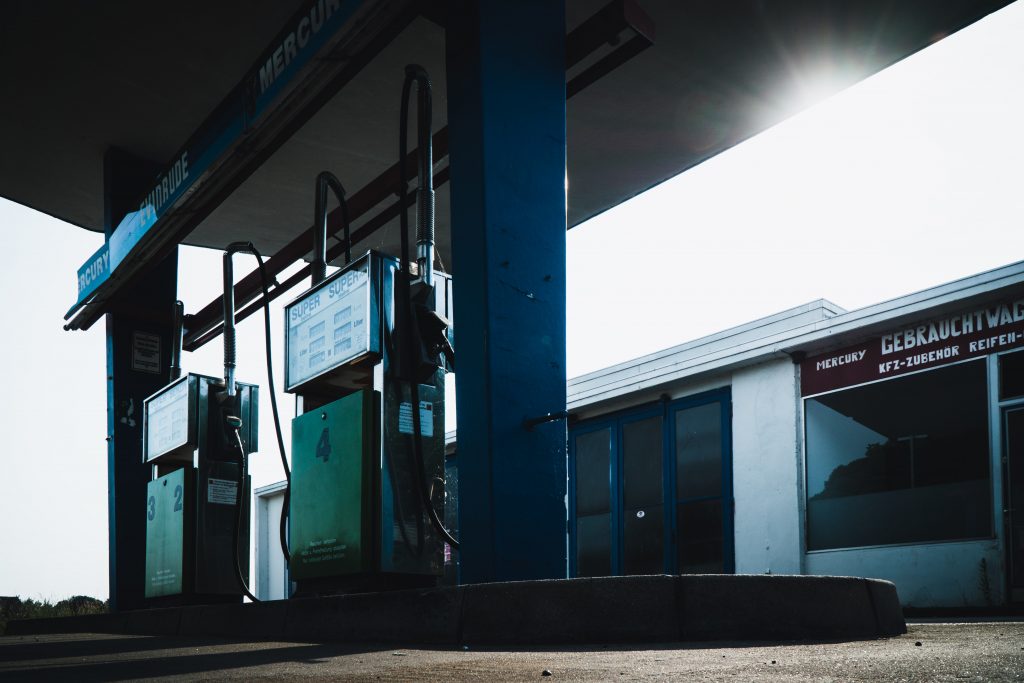Howdy 👋
How was your Memorial Day?
Great day to reflect and appreciate those that sacrificed their lives to give us the opportunity to be here today. I always appreciate the local parades and speeches.
This week in The Impact newsletter you all have come to love and enjoy we have some extremely fascinating articles ranging from the death of oil to uncovering a startup you most likely haven’t heard of – Umida AG, which is working on helping reduce the impacts of the drought California is facing.
Shoot me a note to let me know what you think!
– Swarnav S Pujari
In Your Inbox: The week that begins the Endgame for Oil; Umida AG and how they are reducing water loss using trenches; A company enabling sustainable fashion

Change happens gradually, and then suddenly. This week, the endgame for oil companies became a lot closer and a lot more evident, suddenly, discontinuously, a jump.
The world of energy is a vast part of the global economy: perhaps as much as $10,000 billion per year. That’s so much money that the giants that dominate it, particularly the oil behemoths, aren’t giving up easily. Their grasp on that money gusher just got rather less tight. In one week:
Much has been written on this already (see HERE for example), but let’s review and put into context to see why this is momentous.
The simple lesson from the week is: changing oil firms’ future by shareholder and investor demand seems to be a winning strategy. Expect more of these. A lot more.
The difference between newco and oldco valuations drives startups, equipped with promising new technologies and underpaid entrepreneurs, to rich valuations compared to incumbents. Computer companies. Hard disk drives. Software companies. Telecom. Netflix. Cars. (Tesla’s market capitalization is a singular, perhaps bizarre, example of this: the valuation of TSLA alone is similar to the combined valuation of all the world’s other car makers. LINK HERE)
Incumbents have only a brief, and early, window to make the transition to a new technology. After that, the narrative becomes one of decreasing asset values, lowering returns to investors, stagnating margins and revenues, declining belief in their ability to adapt, and a diminishing equity value and cash hoard with which to buy other firms. These feed a downward spiral that dooms slow-moving incumbents to economic extinction. Big investors will sell—and then even short—their positions to protect against deepening losses, making those losses more profound. Oil giants will, one by one, fall out of major stock indices (Fortune 100, Dow Jones index, FTSE100, etc.) and then index funds must shed their shares.
Losses beget losses.
That spiral is closer. That two of the world’s largest oil companies in one week received a significant push from institutional shareholders (and the firms that advise them) toward a future without their main product, oil, signals the beginning of the end of their business model—oil extraction—and that major investors will push to make that happen.
And, that will inevitably mean improving opportunities and valuations for new energy alternatives and their investors. Soon, and at scale. Established oil companies should seize the moment to take their diminished but not yet destroyed equity valuation to make at-scale investments in post-fossil-fuel solutions. They should, but—if history is any guide—most won’t.
They should heed the caution expressed in Ernest Hemingway’s “The Sun Also Rises”, whence originates the idea that opened this piece:
“How did you go bankrupt?” Bill asked. “Two ways,” Mike said. “Gradually, then suddenly.”
Sign up for The Impact and learn the perspectives behind the latest sustainability trends

Umida AG represents a system or a platform change for agricultural irrigation in California, similar to the switch from flood irrigation to drip irrigation that started decades ago.
Surface water evaporates and Umida AG’s underground trenches will try to mitigate evaporation. During the winter months, when there’s an abundance of water, the trenches will help recharge underground aquifers for future water use.
The underground trenches would allow roots to grow deeper into the ground—close to three feet—providing a larger profile in the soil to sequester carbon.
Umida AG founder Joseph Gallegos has a crazy idea to stick trenches in the soil of agricultural fields to help manage water and carbon in California. Through test trials at UC Riverside and at Fresno State’s Center for Irrigation Technology (CIT), he has teams burying horizontal trenches at up to three feet deep. Supposedly, this will help keep water where the roots are and will increase the amount of carbon sequestration that can happen in the deeper root zones that would be established.
As California is in another damn drought and many of us are about to relocate to places blessed with more abundant water, Mr. Gallegos is working like a mad scientist to prove he can help. He believes strategically designed and placed trenches in the soil could eventually help get California farming to ‘net zero’ water farming where only natural rain, snowmelt, and pumped aquifers would be needed to irrigate the billions of dollars of annual farming output in the state.
As part of the solution, the Umida AG water trenches or pipes could be used to keep an appropriate amount of natural irrigation at root zones while filtering excess water down to natural aquifers where the water would be stored and later pumped to the surface for use.
Another potential benefit of these underground trenches would be allowing permanent crops such as almond and pistachio trees to get an optimal amount of ‘chill hours’ where the temperature of the tree is cool enough so it can rest. Just as we need sleep to refresh, permanent crops need chill hours. The underground trenches would keep the soil cooler with increased moisture and thereby increase the number of chill hours for the trees, an issue farmers are now having to contend with due to increased temperatures throughout the year.
Umida AG’s business development efforts may well be bolstered by California regulations relating to water management called the Sustainable Groundwater Management Act or SGMA (pronounced as ‘sigma’).
If Umida AG’s trials at California universities go well, environmental, social, and governance (ESG) investors who focus on agriculture may become interested as would those of us in California who are looking for water.

The fashion industry is often cited as the second largest polluting of our planet today, and it’s often not just bad for the environment, but also for the garment workers who most often live in communities disproportionately affected by climate change. Yet consumers often don’t know where to begin shopping for more sustainable options or how to continue shopping that way because it’s so time consuming and greenwashing abounds. Because of this, the brands who are doing great work to mitigate impact on our environment struggle to grow. This week, Erin Houston, the CEO of wearwell, addresses how wearwell is addressing this issue.
Wearwell is an online membership service to shop for sustainable clothing. We make it easy to discover and buy clothing that pays garment workers fairly and uses environmentally sustainable materials. Through our service, wearwell members receive a monthly selection of ethically and sustainably made clothing curated just for them, delivered to them digitally through their inbox. We ship them only what they’ve chosen to purchase and they shop with us all over again next month.
We help brands that meet our specific criteria (for wages and environmental impact) to grow through direct revenue and introduction to more customers in their target market.
Beyond being the only company that’s focused on curating clothing for the conscious consumer, wearwell’s business model has a 75% less carbon footprint than subscription box services. Additionally, we can communicate clearly about the impact of each item and have built trust with our customers through our brand vetting process.
The ecosystem lacks a distribution channel for sustainable brands to reach new customers and grow. Most emerging brands rely on DTC channels for about 20% of their revenue and the rest through wholesaling to boutiques. Customers are seeking a way to discover emerging brands in one place, tailoring just for them. By combining curation with discoverability of ethical and sustainable brands, we’re filling an open space in the market that will further unlock growth for our brand partners.
Since mid-2020, consumers are paying attention more than ever to how they choose to spend their money. Consumers are more mindful of social justice issues and how we need to care for the environment. As such, they are buying less overall, but spending more on individual items, in addition to asking questions about fair wages and materials. Getting the fashion industry to a sustainable place is going to take many, many solutions, including consumers buying more secondhand, circular business models, textile recycling technologies, and more. We’re one piece of the puzzle when someone wants to add something new to their wardrobe and we’re excited to see the technologies that grow up alongside us as more begin to invest in solutions.
GenZ represents an enormous wave of consumers that view the role of business as involving community and stakeholders, especially when it comes to the environment. This includes circular business models – consumers will be mindful about what they are purchasing, from a production and post-consumption perspective, and producers will become more intentional and more accountable for the end of life of their products. Companies like wearwell will help bridge this gap for mindful consumers.
“We’re not building fast enough”
When it comes to hitting our ambitious renewable energy goals, be it by 2030 or 2050, the rate at which we are building isn’t fast enough. A lot of the reason for that is because of the number of parties involved in building and energizing a single solar or wind project. Ranging from securing the land, to filling for interconnection or even partnering with a bank or tax equity lender to help finance the project. This process has traditionally been slow mainly because it takes time to put together a deck on the project and circulate it manually to your network to find a buyer who can continue the next phase of development.
A renewable energy asset can change ownership 3-4 times.
Check out the full interview on YouTube and let us know what you think!
Editors: Swarnav S Pujari, Daniel Kriozere Writers: Matthew Morris
If you aren’t absolutely thrilled with The Impact, reply and let us know why. Or you can unsubscribe from all updates by clicking here.
Copyright © The Impact 2021. All Rights Reserved || 19 Morris Ave, Bldg 128, Brooklyn NY 11205
Develop your market map of up-and-coming climate startups and market opportunities by subscribing to our weekly newsletter for free.